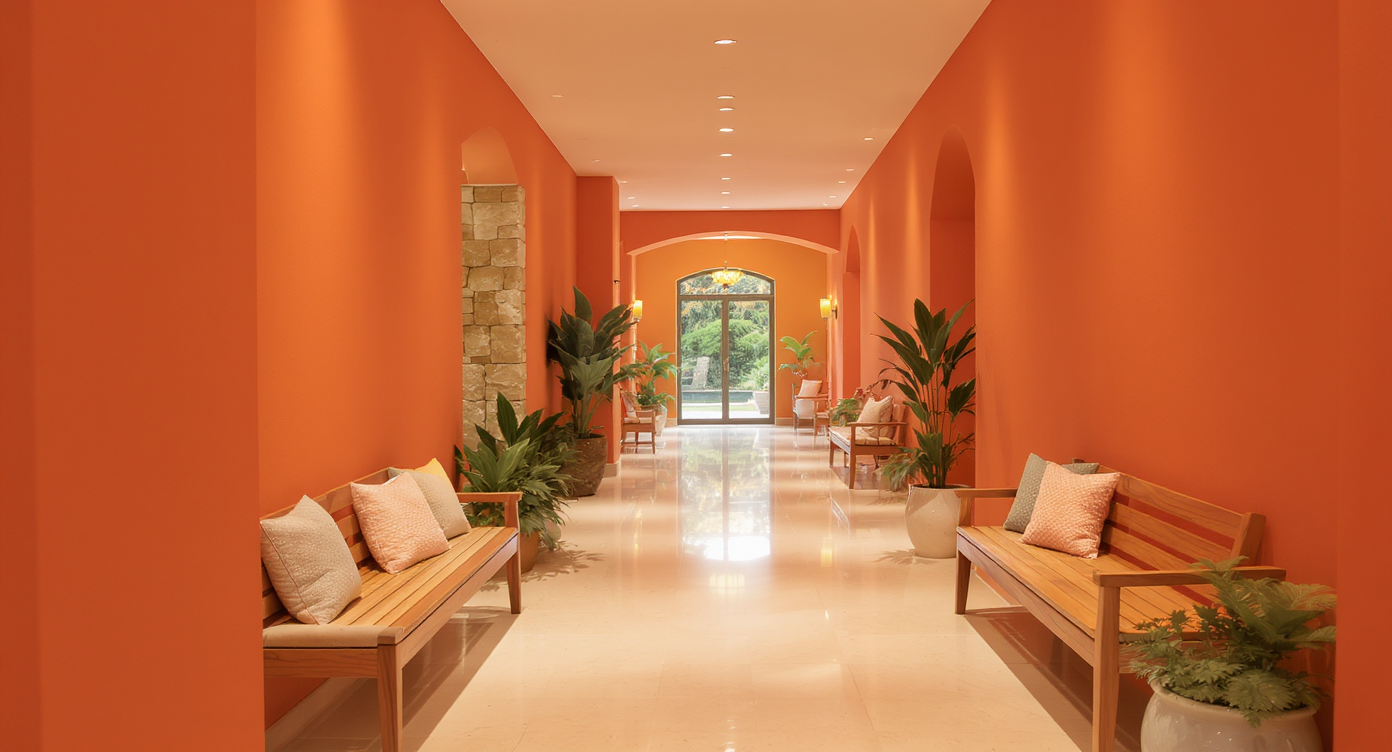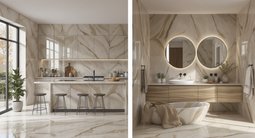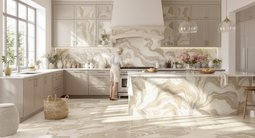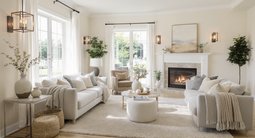TL;DR
Expect 2026 home trends to center on comfort, character, and climate‑savvy design. Real‑world listing data shows sharp rises in color‑drenched rooms, spa‑like wellness features, sustainable home upgrades, disaster‑ready landscaping, cozy reading nooks, and handcrafted details. If you’re asking what home trends will be popular in 2026, these six ideas deliver everyday joy now and resale appeal later.
Boost Design Value in 2026

Warm hues and natural textures set a welcoming tone for 2026’s home design trends.
Get ahead on 2026 home trends: color drenching, wellness features, sustainable upgrades, disaster‑ready design, and cozy nooks that add value.
What 2026 Home Trends Will Be Everywhere? Color Drenching, Wellness, and Sustainable Upgrades
From bold paint to smarter, calmer spaces, here’s how to future‑proof your home without losing the soul of it.
TL;DR: Expect 2026 home trends to center on comfort, character, and climate‑savvy design. Real‑world listing data shows sharp rises in color‑drenched rooms, spa‑like wellness features, sustainable home upgrades, disaster‑ready landscaping, cozy reading nooks, and handcrafted details. If you’re asking what home trends will be popular in 2026, these six ideas deliver everyday joy now and resale appeal later.
Here’s the thing: trends that stick aren’t gimmicks. They solve for how we actually live — and they photograph well in listings when it’s time to sell. Analysts tracking listing language report big jumps in features tied to well‑being, energy resilience, and personality. That’s your roadmap.
If you’re prepping to sell in 12–18 months or just craving a refresh, this guide shows how to execute each 2026 home trend with designer‑level polish, clear measurements, and budget‑savvy steps.
The 6 big 2026 home trends, at a glance
The 6 big 2026 home trends, at a glance
Market analysts report mentions of color‑drenched rooms up roughly 150%, wellness features up about one‑third, and zero‑energy or battery‑ready homes up around 70% in listing descriptions. Translation: buyers are shopping for comfort, character, and resilience.
1) Color drenching that feels elevated
Color drenching means painting walls, trim, doors, and ceiling in one hue to create a cocoon effect — a technique that can make small rooms feel intentional and high‑end.
- Pick a single color and vary sheen: matte on walls, satin on trim, flat on ceilings for dimension.
- Go one step darker on the ceiling (one paint chip down) to avoid a “color fog.”
- Rule of thumb: aim for LRV 10–40 for moody spaces, 45–60 for bright but cozy; test swatches in morning and evening light.
- Style it: limit accent colors to a tight palette (two tones max) so the room reads cohesive, not chaotic.
2) Wellness features beyond the spa bath
Wellness features that consistently attract buyers include spa‑style bathrooms, infrared saunas, home gyms, adaptive lighting, and better air quality.
- Lighting: target 300–500 lux on a page for reading; add dimmable, warm‑to‑cool LEDs (2700–4000K) to match energy levels.
- Bath upgrades: rainfall + handheld, a bench at 17–19 inches high, and heated floors on a programmable thermostat.
- Air quality: MERV‑13 filters, sealed gaps, and a balanced ERV/HRV; plants are lovely but not a filtration plan.
- Gym zone: 6x8 feet minimum for a bike + mat; add shock‑absorbing flooring with 6–8 mm rubber.
3) Sustainable upgrades that pay back
Energy‑smart homes list and sell better because monthly costs drop; experts recommend prioritizing efficiency before generation.
- Start with a blower‑door test, then air‑seal and insulate to R‑38 in attics where feasible.
- Heat pump water heaters save 2–3x energy; induction ranges cut indoor pollutants and speed cooking.
- Solar + storage: a typical 6–8 kW array with a 10–20 kWh battery covers evening loads and outages; add a 240V Level‑2 EV charger (40–60A).
- Water sense: swap to 1.28 gpf toilets and 1.5 gpm showerheads; low flow no longer means low comfort.
4) Disaster‑ready design with curb appeal
Resilience upgrades — from flood‑smart landscaping to ember‑resistant details — protect value and peace of mind.
- Wildfire defensible space: keep the first 5 feet non‑combustible, limb trees up 6–10 feet, and clear ladder fuels within 30 feet.
- Roof and vents: Class A roofing and 1/8‑inch mesh vent screens reduce ember intrusion.
- Flood planning: elevate critical systems 1–3 feet above base flood elevation; slope soil 5% away from the foundation for the first 10 feet.
- Back‑up power: whole‑home batteries or a transfer switch for a portable generator keep essentials running.
5) Cozy reading nooks that invite lingering
Reading nooks rank high because they cost little, photograph beautifully, and deliver daily calm.
- Seat height around 17–19 inches, cushion depth 20–24 inches; add a side surface 24–26 inches high.
- Layer light: sconce behind the shoulder plus an ambient lamp; 300–500 lux at the page is the sweet spot.
- Acoustic comfort: soft rug + curtains can drop perceived noise by 3–5 dB.
- Micro‑spaces: convert a stair landing, dormer, or closet; build a 16–18 inch deep bench with hidden storage.
6) Personal accents and artisan character
Handcrafted elements — from custom built‑ins to reclaimed wood — are trending because they telegraph care and uniqueness.
- Low‑lift character: swap stock knobs for unlacquered brass or hand‑turned wood; mix two metals max.
- Built‑ins: 12–13 inch deep shelves fit most books; leave 1–2 inches for styling objects and breathing room.
- Statement millwork: picture‑frame molding at 28–34 inches from the floor adds quiet architecture without a full reno.
- Vintage edits: one hero piece per room keeps it curated, not cluttered.
Anecdote
A designer friend always starts with the view. She’ll color drench the walls to quiet visual noise, then angle a chair toward the best sightline. She swears no amount of styling beats the feeling of a seat placed where your eye naturally wants to rest.
Common mistakes to skip in 2026
Common mistakes to skip in 2026
Small missteps can erase the premium these home trends promise; measure, test, and edit before you commit.
- Painting only the walls in a color‑drenched concept. Trim and ceiling left white break the effect; commit to the full wrap for impact.
- Confusing “spa” with slippery finishes. Choose high‑traction tile (DCOF ≥ 0.42) and install a shower grab bar at 33–36 inches high.
- Going solar before sealing air leaks. Efficiency first yields faster payback; think “reduce, then produce.”
- Over‑decorating reading nooks. If you can’t stretch your legs and park a mug, it’s a photo set, not a retreat.
- Adding quirky details everywhere. Personal accents work best as focal points; keep 70% of the room calm so 30% can sing.
Pro tips and expert insights for 2026 home trends
Pro tips and expert insights for 2026 home trends
Designers often advise testing ideas in one room first, then scaling what you love — the best trend is the one you keep using.
- Sample smarter: paint two 2x3‑foot swatches on opposite walls; live with them for 48 hours across daylight and lamplight.
- Wellness on a budget: a $150 dimmer + 2700K/4000K bulbs can transform mood more than a costly fixture swap.
- Resale reality: list photos love symmetry. Style shelves in odd numbers (3–5 items per bay) and echo colors across the room.
- Future‑proof power: run a 60A subpanel to the garage during any renovation to simplify EV charging and backup circuits later.
- Quiet wins: add door sweeps, weatherstrip, and a dense rug pad; lower noise by a noticeable margin for under a few hundred dollars.
One reflection after years of walk‑throughs: buyers remember how a home made them feel. Cozy light, soft landings, and considered details outlast flashy installs.
Real stories: what worked (and why)
Real stories: what worked (and why)
Clear before‑and‑after wins help buyers visualize outcomes, which is why these projects often headline listing descriptions.
- A city condo with low ceilings looked flat until the owners color‑drenched a den in inky blue. By painting the ceiling one shade darker and the trim in satin, the room suddenly felt intentional — and it became the most‑saved image in their listing preview.
- A young family turned a hallway closet into a reading nook with a 17‑inch‑high bench, beadboard backing, and a plug‑in sconce. The cost was under $500, and it became the home’s “pause button.”
- After a storm outage, a homeowner installed a 7.6 kW solar array with a 13.5 kWh battery and a transfer switch. The fridge, router, lights, and a mini‑split ran through a 10‑hour blackout — a selling point that resonated with remote workers.
- One couple layered wellness in phases: first a MERV‑13 filter and ERV, then dimmable 2700–4000K lighting, and finally a small 4x4‑foot cedar sauna. Each step improved daily life without overwhelming their budget.
Visualization Scenario
Picture this: the late afternoon glow hits a deep‑green, color‑drenched library. A wool rug muffles sound, a brass sconce warms to 2700K, and a built‑in bench holds hidden blankets. The HVAC hum fades behind new weatherstripping, and the power monitor shows your battery charged from the morning sun. It’s calm, resilient, and unmistakably yours.
FAQ
FAQ
How should I color drench a room without making it feel dark? Choose a mid‑tone color with an LRV between 45 and 60, use matte on walls and a slightly higher sheen on trim, and keep furnishings light to balance.
What’s the best way to add wellness features on a budget? Start with adaptive lighting at 2700–4000K, a dimmer, and a MERV‑13 filter; these low‑cost changes deliver outsized comfort before bigger spa upgrades.
Which sustainable home upgrades increase value fastest? Air sealing and insulation typically beat solar on payback; then consider a heat pump water heater, induction cooktop, and a 240V EV charger.
How do you disaster‑proof landscaping for wildfire risk? Maintain a 0–5 foot non‑combustible zone, limb trees 6–10 feet, and space shrubs to prevent “ladder fuel,” then use Class A roofing and screened vents.
How can I design a cozy reading nook in a small space? Aim for a 17–19 inch seat height, 20–24 inch cushion depth, a sconce behind your shoulder, and 300–500 lux at the page for eye‑happy reading.
Bring it home
If you prioritize one upgrade for 2026, make it the one you’ll use every day — light you can tune, a nook you’ll claim, or a system that lowers bills. The best 2026 home trends blend beauty, comfort, and resilience, so your space feels personal now and market‑ready later. Start small, measure twice, and let the details tell your story.
Tools and inspiration
- Plan layouts, palettes, and built‑ins virtually with ReimagineHome to test color drenching, lighting, and furniture before you buy.
- Ask your utility for a free or low‑cost energy audit; many offer rebates on heat pumps, induction ranges, and insulation.
- Check local fire and flood maps; tailor defensible space and drainage to your specific risk.
Image ideas, alt text, and captions
- Alt: “Color‑drenched reading room in deep teal with matching trim and ceiling.” Caption: One hue across walls, trim, and ceiling creates a cocooning vibe.
- Alt: “Spa bathroom with rainfall shower, bench at 18 inches, and heated herringbone floor.” Caption: Wellness features that soothe daily and show well in listings.
- Alt: “Solar panels and drought‑tolerant front yard with 5‑foot gravel perimeter.” Caption: Sustainable and disaster‑ready upgrades that protect value.
.svg)

.svg)














.png)